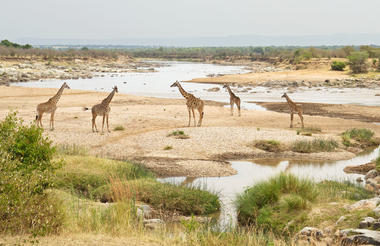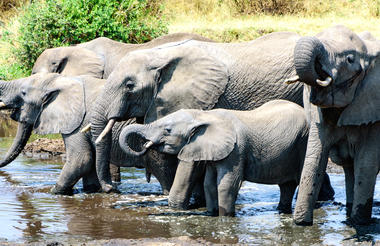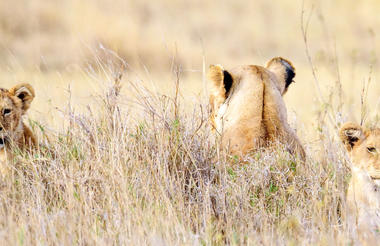Tarangire National Park, situated within Tanzania’s spectacular Manyara Region, is an awe-inspiring national park comprising of granite ridges, river valleys, mixed vegetative landscapes and free-roaming wildlife. During the annual dry season, the Tarangire River is a magnet for thirsty wildlife. Large herds of elephants and migratory wildebeest, zebra, buffalo, impala, gazelle, hartebeest and eland gather and not surprisingly, predators follow. With lion being among commonly spotted animal, it is a rare day that a visitor does not spot this majestic animal. Tarangire is also the one place in Tanzania where dry-country antelope such as oryx, lesser kudu and gerenuk are seen on occasions. This expansive area is also known for its spectacular baobab trees, its breathtaking views of the Masai Steppe and the wondrous mountains to the south.
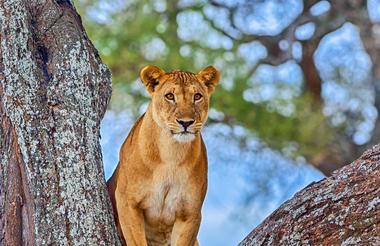
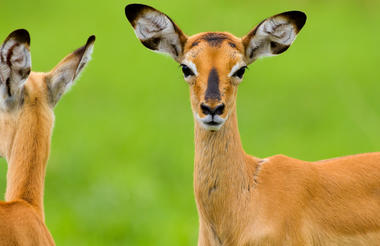
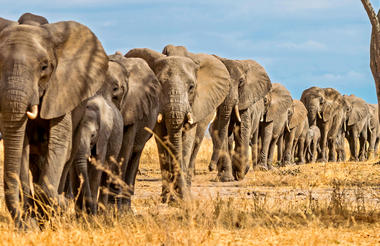
The Ngorongoro Crater is game viewing gone crazy and it is not surprising that with is one of Tanzania’s major tourist draw-cards. Within the crater rim a daily wildlife drama is played out as large herds of zebra and wildebeest graze nearby lions, leopards, elephants and black rhinos. Outside of the crater a similar drama continues in a more spread out manner with Masai herdsmen thrown into the mix.
The Ngorongoro Conservation Authority area is part of the larger Serengeti ecosystem, it adjoins the Serengeti National Park, merging into the Southern Plains. The south and west of the area are volcanic highlands including Lake Natron ,the active volcano Ol Donyo Lengai and the lesser known Empakai Crater; the southern and eastern boundaries are defined by the rim of the East African Rift wall.
It is most famous for the Ngorongoro Crater, a UNESCO World Heritage site and one of the most well-known wildlife areas in the world. The Crater itself is the world's largest inactive and intact volcanic caldera, formed when it exploded and collapsed in on itself some two to three million years ago. The floor of the Crater covers 260 km2 (100 square miles) and is mostly covered by grasslands with two small wooded areas and a seasonal salt lake in the centre of the crater; the lake is known by two names, Lake Magadi or Lake Makat. The other major water source is the Ngoitokitok, near the eastern crater wall.
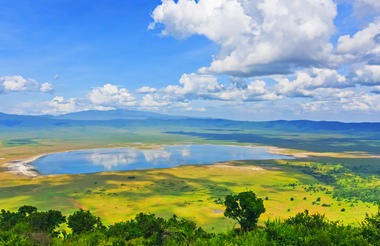
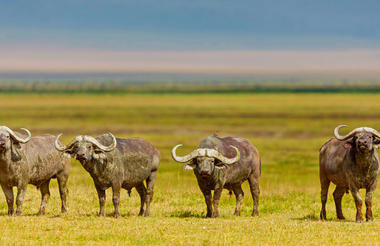
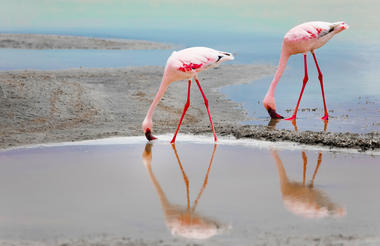
The Serengeti is one of the most famous wildlife areas in the world and home to the annual wildebeest migration. The Serengeti National Park itself covers 14,750 km2 of grassland plains, open savannah, riverine forests and woodlands. It lies in the north of Tanzania, bordered by Kenya and the Masai Mara National Reserve in the north, the Ngorongoro Crater Area to the southeast, the Maswa Game Reserve to the south west and the Loliondo Game Controlled Area area to the east. Together, all these areas form the larger Serengeti ecosystem which almost all see the wildebeest herds at some point during their annual circuit.
The northern Serengeti area of lush, rolling grassland and tree-lined watercourses is the most northerly point of the migration journey, together with Kenya's Masai Mara. During the dry season from July to October, the herds mass on both banks of the Mara River, frequently crossing - and braving the crocs - in response to local weather patterns that only they seem to understand.
Unlike the southern plains of the Serengeti that dry out, forcing all but the hardiest of species to leave, this area remains lush and green. There's a collective sigh of relief from the resident game when the one and a half million migrating wildebeest - and the madness that follows them - leave town for a few months. And the resident game in the area is spectacular. Plains game in the form of zebra, topi, gazelles, impala, buffalo and giraffe all frequent the area throughout the year. Lion are rarely far away and leopard, ever present, but always elusive, stalk the rocky kopjes and river lines.
